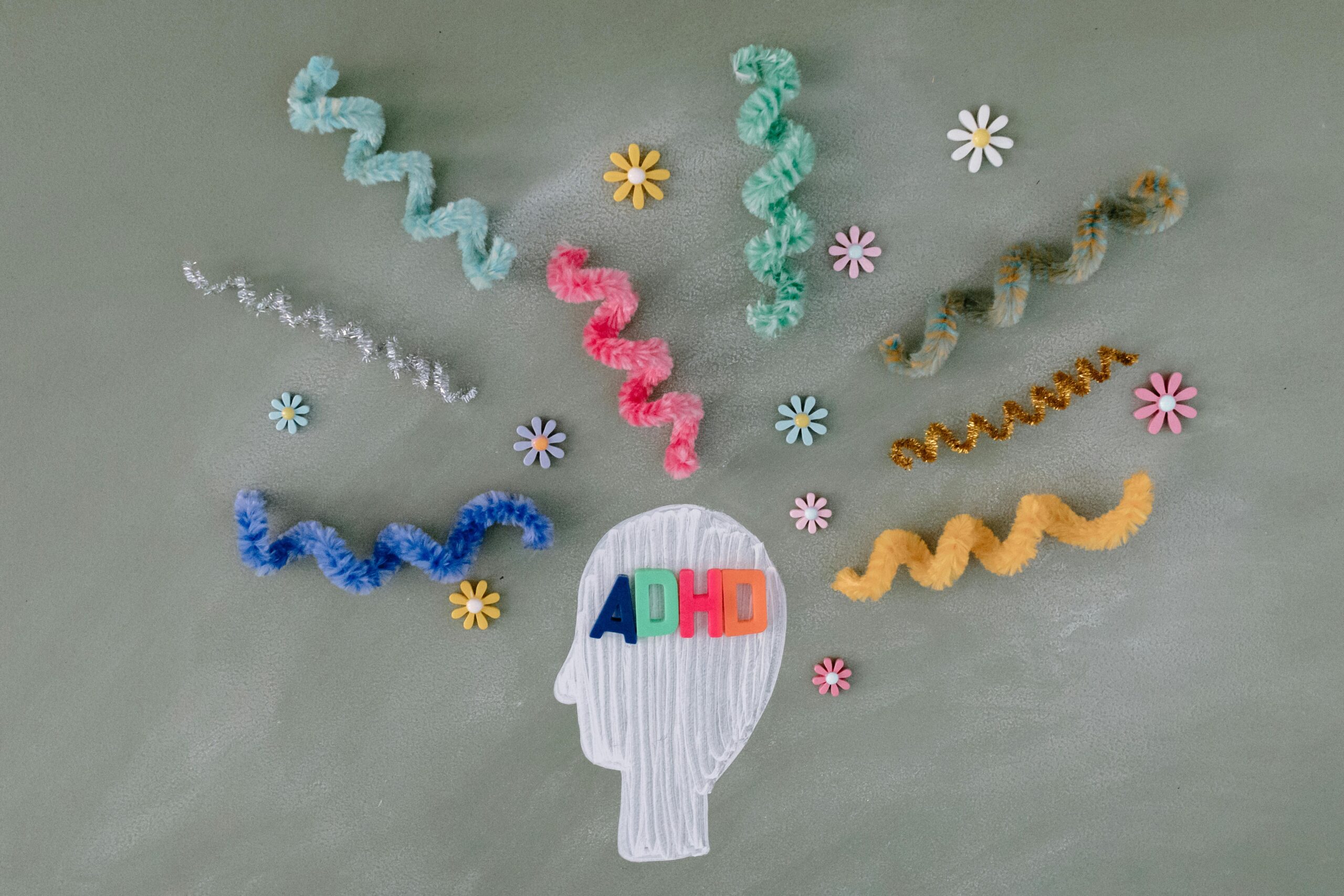Living with ADHD as an adult can be a significant challenge, impacting various facets of life, from professional performance to personal relationships. Many adults with ADHD struggle with symptoms such as inattention, hyperactivity, and impulsivity, which can lead to feelings of frustration and overwhelm. While stimulant medications like Adderall and Ritalin are commonly prescribed and have proven effective for many, they are not suitable for everyone. Some individuals may experience adverse side effects, develop a dependence on these medications, or have medical conditions that contraindicate their use.
In such cases, non-stimulant medications offer a viable alternative for managing ADHD symptoms. These medications work differently than stimulants and can be effective in improving focus, reducing impulsivity, and enhancing overall quality of life. This comprehensive guide delves into the most effective non-stimulant medications for ADHD, exploring their mechanisms of action, potential side effects, and insights from real users.
Understanding ADHD in Adults
What is ADHD?
ADHD, or Attention-Deficit/Hyperactivity Disorder, is a neurodevelopmental disorder that begins in childhood and often persists into adulthood. The core symptoms of ADHD include:
Inattention: Adults with ADHD may struggle to focus on tasks, become easily distracted, and have difficulty organizing activities. They may frequently lose items necessary for tasks, forget appointments, or overlook details in their work.
Hyperactivity: While hyperactivity often decreases with age, many adults still experience restlessness and an inability to relax. This might manifest as a constant need to move or fidget.
Impulsivity: Impulsivity can lead to hasty decisions without considering the consequences, resulting in challenges in relationships and work settings. Adults may interrupt others, struggle with waiting their turn, or engage in risky behaviors.
Understanding these symptoms is crucial for identifying effective treatment strategies. ADHD is often accompanied by co-existing conditions, such as anxiety, depression, or learning disabilities, which can complicate diagnosis and treatment.
Why Consider Non-Stimulant Medications?
Many adults with ADHD either do not respond well to stimulant medications or prefer to avoid them due to side effects. Here are several reasons to consider non-stimulant options:
Stimulant medications can cause increased heart rate, anxiety, insomnia, and appetite suppression. Non-stimulant medications typically have a different side effect profile, which may be better tolerated by some individuals.
Adults with ADHD may also have anxiety or mood disorders. Some non-stimulant medications can address these conditions simultaneously, providing a more holistic approach to treatment.
Some individuals may feel uncomfortable with the idea of using stimulants due to concerns about dependency or misuse. Non-stimulant medications offer a non-addictive alternative.
Non-stimulants can be a good option for those needing long-term management of ADHD symptoms without the cyclical use and potential withdrawal issues associated with stimulants.
Overview of Non-Stimulant Medications
Let’s explore the primary non-stimulant medications available for adults with ADHD, detailing their mechanisms, benefits, side effects, and real-life experiences.
1. Atomoxetine (Strattera)
Atomoxetine is a selective norepinephrine reuptake inhibitor (NRI) that increases norepinephrine levels in the brain, enhancing attention and reducing impulsivity.
Benefits:
- Non-addictive, making it a safer choice for individuals concerned about dependency.
- Long-lasting effects allow for once-daily dosing, which can improve adherence to treatment.
- May help reduce anxiety, making it suitable for individuals with co-occurring anxiety disorders.
Side Effects: Common side effects include fatigue, decreased appetite, nausea, and dry mouth. Some users may experience mood swings, irritability, or sexual dysfunction.
Dosage and Administration: The typical starting dose is 40 mg daily, which can be increased to a maximum of 100 mg based on response and tolerability.
2. Guanfacine (Intuniv)
Guanfacine is an alpha-2 adrenergic agonist that affects receptors in the brain to improve attention and reduce hyperactivity. It modulates the release of norepinephrine, leading to enhanced executive functioning.
Benefits:
- Particularly effective for reducing hyperactivity and impulsivity.
- Can improve sleep quality, which is often a challenge for adults with ADHD.
- May help with emotional regulation, reducing irritability and mood swings.
Side Effects: Users may experience drowsiness, dry mouth, fatigue, and low blood pressure. Some individuals report feeling sedated, especially during the initial phase of treatment.
Dosage and Administration: The starting dose is typically 1 mg daily, which can be adjusted based on the individual’s needs and side effects, with a maximum dose of 4 mg.
3. Clonidine (Kapvay)
Like Guanfacine, Clonidine acts as an alpha-2 adrenergic agonist, affecting norepinephrine release and enhancing attention and impulse control.
Benefits:
- Effective for managing both ADHD symptoms and associated anxiety.
- Often used as an adjunct to stimulant medications for enhanced effects.
- Can help with sleep disturbances, making it useful for those who experience insomnia.
Side Effects: Common side effects include sedation, dry mouth, and potential fluctuations in blood pressure. Some individuals may feel overly fatigued, particularly when starting treatment.
Dosage and Administration: Starting doses generally begin at 0.1 mg nightly, which can be increased to a maximum of 0.4 mg per day.
4. Bupropion (Wellbutrin)
Bupropion is a norepinephrine-dopamine reuptake inhibitor (NDRI). It enhances levels of norepinephrine and dopamine in the brain, which can help improve mood and concentration.
Benefits:
- Addresses both ADHD symptoms and co-occurring depression or anxiety, providing a dual-action treatment.
- Can aid in smoking cessation and weight management, making it a versatile option for some individuals.
- Less likely to cause sedation compared to other non-stimulants, which can be beneficial for those needing to maintain energy levels.
Side Effects: Some users may experience insomnia, dry mouth, anxiety, or increased heart rate. It is important to monitor these effects, especially for individuals with a history of seizures.
Dosage and Administration: Typical starting doses range from 150 mg to 300 mg daily, depending on individual needs and tolerability.
5. Venlafaxine (Effexor)
Venlafaxine acts as a serotonin-norepinephrine reuptake inhibitor (SNRI). It increases levels of serotonin and norepinephrine, which can improve mood and attention.
Benefits:
- Effective for individuals who experience significant anxiety or depression alongside ADHD symptoms.
- Can enhance motivation and concentration, addressing both emotional and cognitive symptoms.
- Helps in stabilizing mood fluctuations that often accompany ADHD.
Side Effects: Common side effects include nausea, dizziness, increased blood pressure, and fatigue. Regular monitoring of blood pressure is essential, especially at higher doses.
Dosage and Administration: Starting doses typically range from 75 mg to 375 mg daily, depending on individual needs and tolerance.
Choosing the Right Medication
Consulting a Healthcare Provider
Choosing the right medication for ADHD requires collaboration with a healthcare provider who understands your specific symptoms, medical history, and any co-occurring conditions. Here are some important considerations:
- Initial Assessment: A comprehensive assessment should include a detailed history of your symptoms, any previous treatments, and overall health.
- Personalized Treatment Plans: Each individual responds differently to medications. A personalized plan may involve trying one or more non-stimulant options to find the best fit.
- Regular Follow-ups: Regular consultations are essential to monitor progress, adjust dosages, and address any side effects. Keeping an open line of communication with your provider can enhance treatment outcomes.

Monitoring Side Effects
Keeping track of side effects is crucial for successful treatment. Here’s how to manage this process:
Document your experiences daily, noting any changes in mood, focus, sleep patterns, or physical symptoms. This information can help your healthcare provider make informed adjustments to your treatment plan. Look for patterns in your journal entries that correlate with medication changes. This can help you and your provider understand how you respond to different treatments. Connecting with ADHD support groups can provide valuable insights and encouragement from others who share similar experiences. They can offer practical advice on managing side effects and enhancing treatment efficacy.
Lifestyle Changes to Support ADHD Management
While medication can be a critical component of ADHD management, lifestyle changes can enhance treatment effectiveness and improve overall quality of life.
Diet and Nutrition
Diet plays a significant role in managing ADHD symptoms. Here are some dietary recommendations:
- Omega-3 Fatty Acids: Research suggests that omega-3 fatty acids can improve attention and cognitive function. Incorporate foods rich in omega-3s, such as fatty fish (salmon, sardines), flaxseeds, walnuts, and chia seeds.
- Balanced Meals: Eating regular, balanced meals helps stabilize blood sugar levels, reducing mood swings and irritability. Aim for a mix of proteins, healthy fats, and complex carbohydrates in your diet.
- Avoiding Processed Sugars: Many individuals with ADHD report that reducing sugar intake helps improve concentration and reduces hyperactivity. Consider limiting sugary snacks and drinks.
- Stay Hydrated: Dehydration can impair cognitive function. Aim to drink enough water throughout the day to stay hydrated.

Exercise
Regular physical activity is a powerful tool for managing ADHD symptoms. Here’s how exercise can help:
- Boosts Dopamine: Exercise increases dopamine levels, enhancing attention and motivation. Aim for at least 150 minutes of moderate aerobic activity each week.
- Improves Mood: Physical activity releases endorphins, which can elevate mood and reduce anxiety. Activities like running, cycling, or dancing can be particularly beneficial.
- Enhances Focus: Exercise can improve concentration and cognitive flexibility. Consider incorporating activities like yoga or tai chi, which also promote mindfulness and relaxation.
Mindfulness and Therapy
Integrating mindfulness practices can significantly improve emotional regulation and attention. Here are some effective strategies:
- Meditation: Regular meditation practice can enhance focus and reduce stress. Consider starting with guided meditation apps or local classes.
- Deep-Breathing Exercises: Practicing deep breathing techniques can help calm racing thoughts and reduce anxiety.
- Cognitive-Behavioral Therapy (CBT): CBT can provide valuable strategies for coping with ADHD challenges, improving organization, and addressing negative thought patterns.
- Coaching: ADHD coaching can help individuals set and achieve personal goals, improve time management, and develop coping strategies for daily challenges.
Conclusion
Non-stimulant medications offer a viable and effective alternative for adults managing ADHD. They can help control symptoms without the risks associated with stimulant medications. Finding the right medication may take time and collaboration with a healthcare provider, but the benefits can be substantial. Remember, individual experiences vary, and combining medication with lifestyle changes often yields the best results.
If you’re considering non-stimulant treatment for ADHD, take the first step by consulting with a healthcare professional. Together, you can develop a personalized treatment plan that works for you.



